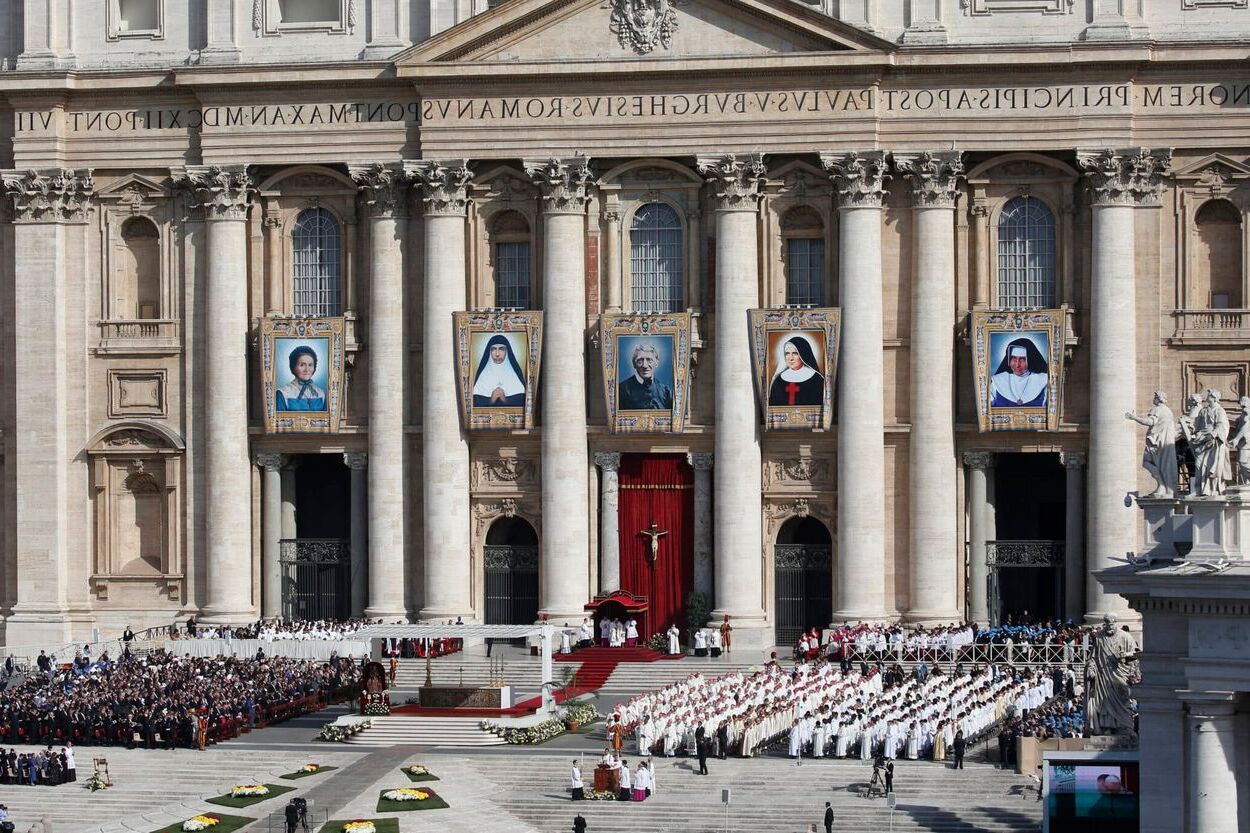
Canonization is the process by which the Catholic Church declares a deceased person to be a saint. This declaration means the person is recognized as having lived a life of heroic virtue or martyrdom and is now in heaven, capable of interceding for people on Earth. Canonization involves several steps, including a thorough investigation of the candidate's life, miracles attributed to their intercession, and approval by the Pope. This process can take many years, even centuries. Saints serve as models of holiness and inspire the faithful to live virtuous lives. Canonization not only honors the individual but also enriches the Church's spiritual heritage.
What is Canonization?
Canonization is the process by which the Catholic Church declares a deceased person to be a saint. This involves a thorough investigation into the person's life, virtues, and miracles attributed to them. Here are some fascinating facts about this sacred process.
-
The word "canonization" comes from the Greek word "kanon," meaning a rule or standard.
-
The process of canonization has been in place since the early centuries of the Church.
-
Before formal canonization, saints were often declared by popular acclaim.
The Steps of Canonization
The journey to sainthood involves several steps, each with its own requirements and significance.
-
The first step is being declared a "Servant of God," which means the Vatican has given permission to investigate the person's life.
-
Next, the individual is declared "Venerable" if they are found to have lived a life of heroic virtue.
-
Beatification follows, requiring one verified miracle attributed to the person's intercession.
-
Canonization, the final step, requires a second verified miracle after beatification.
Miracles and Their Importance
Miracles play a crucial role in the canonization process, serving as divine confirmation of the person's sainthood.
-
Miracles are usually medical cures that cannot be explained by science.
-
The Church employs medical experts to verify the authenticity of these miracles.
-
Miracles must occur after the person's death to be considered for canonization.
Historical Facts About Canonization
The history of canonization is rich with intriguing events and figures.
-
The first saint to be formally canonized was St. Ulrich of Augsburg in 993 AD.
-
Pope John Paul II canonized more saints than all his predecessors combined.
-
The longest canonization process took over 500 years for St. Joan of Arc.
Canonization in Modern Times
Modern canonization processes have adapted to contemporary needs while maintaining traditional rigor.
-
Pope Francis has streamlined the process to make it more accessible.
-
Social media has played a role in spreading awareness about potential saints.
-
Modern saints often include laypeople, not just clergy and religious figures.
Controversies and Criticisms
Like any significant process, canonization has faced its share of controversies and criticisms.
-
Some argue that the process is too lengthy and complicated.
-
Others believe that the requirement for miracles is outdated.
-
There have been instances where the canonization of certain individuals sparked debate within the Church.
-
Despite criticisms, canonization remains a deeply respected and integral part of Catholic tradition.
The Final Word on Canonization
Canonization, a fascinating process, has deep roots in history and faith. From rigorous investigations to miracles, it’s clear that becoming a saint isn’t a walk in the park. This journey reflects the dedication, faith, and extraordinary lives of individuals who’ve made significant impacts on the world and their communities. Understanding these facts gives a glimpse into the intricate and sacred process that honors these remarkable figures. Whether you're a history buff, a religious scholar, or just curious, these insights into canonization offer a richer appreciation for the saints and their legacies. So next time you hear about a new saint, you’ll know the incredible journey behind that honor. Keep exploring, stay curious, and who knows? You might uncover more intriguing facts about the world around us.
Was this page helpful?
Our commitment to delivering trustworthy and engaging content is at the heart of what we do. Each fact on our site is contributed by real users like you, bringing a wealth of diverse insights and information. To ensure the highest standards of accuracy and reliability, our dedicated editors meticulously review each submission. This process guarantees that the facts we share are not only fascinating but also credible. Trust in our commitment to quality and authenticity as you explore and learn with us.


